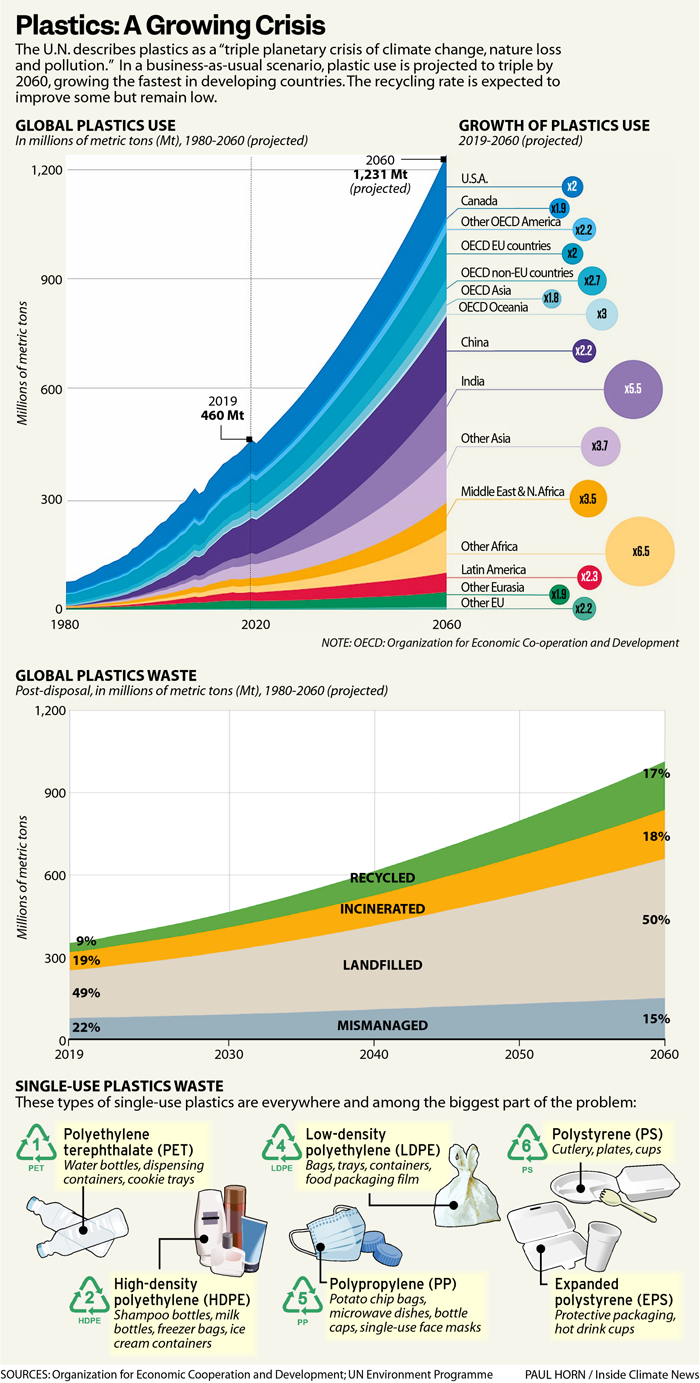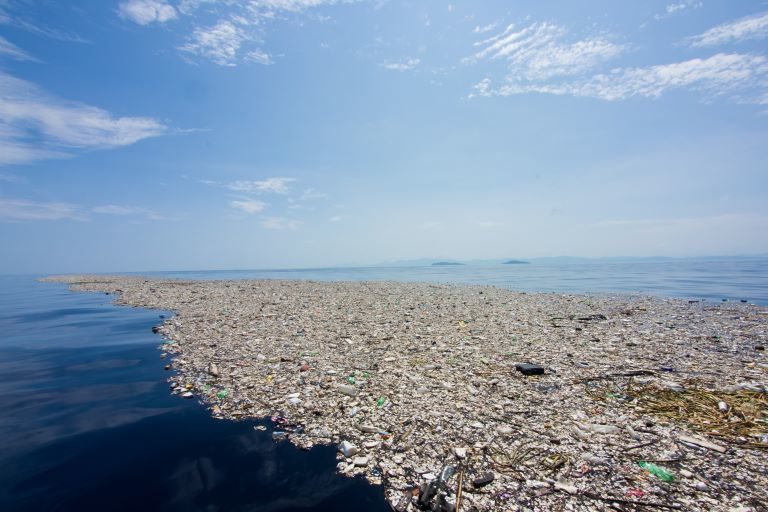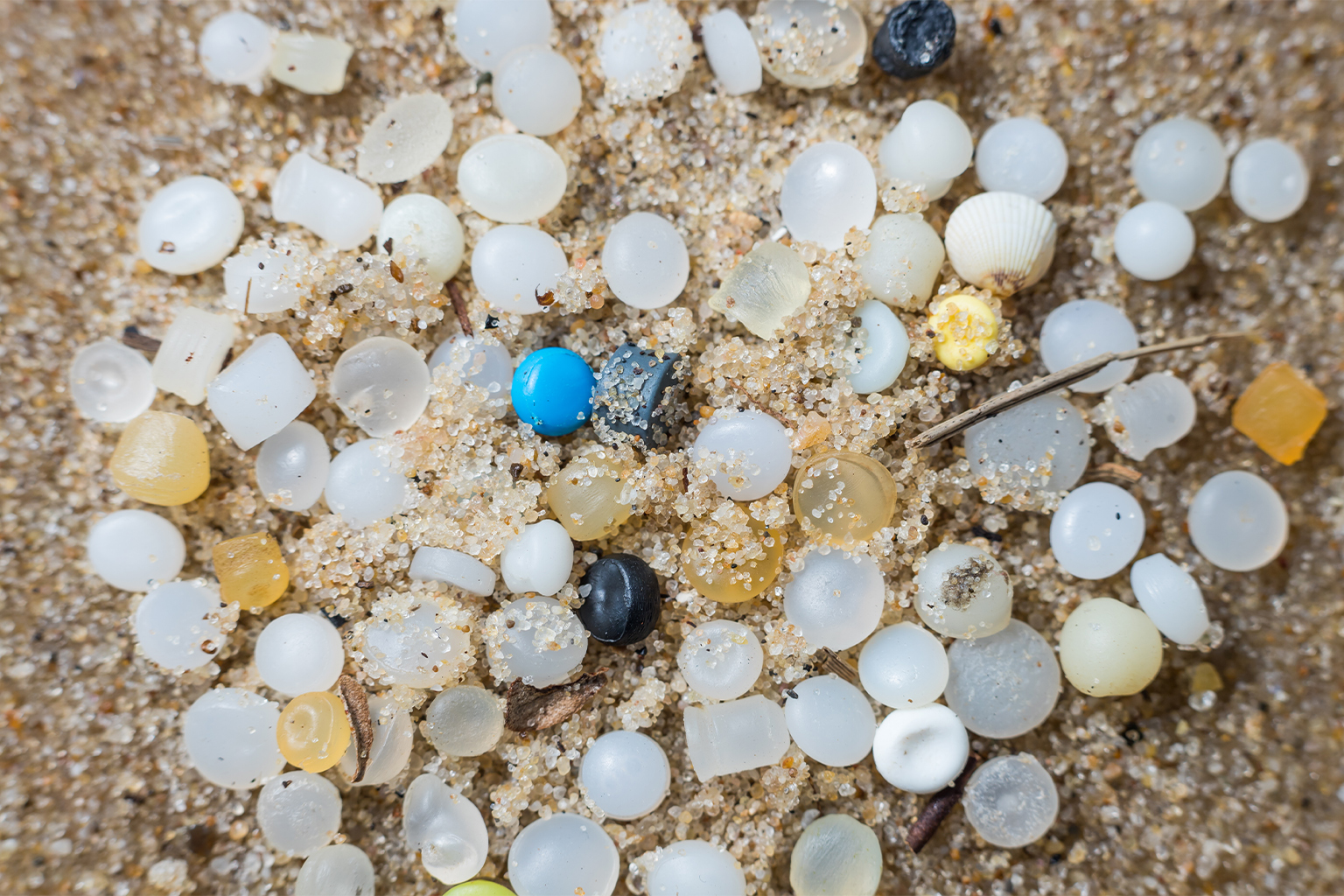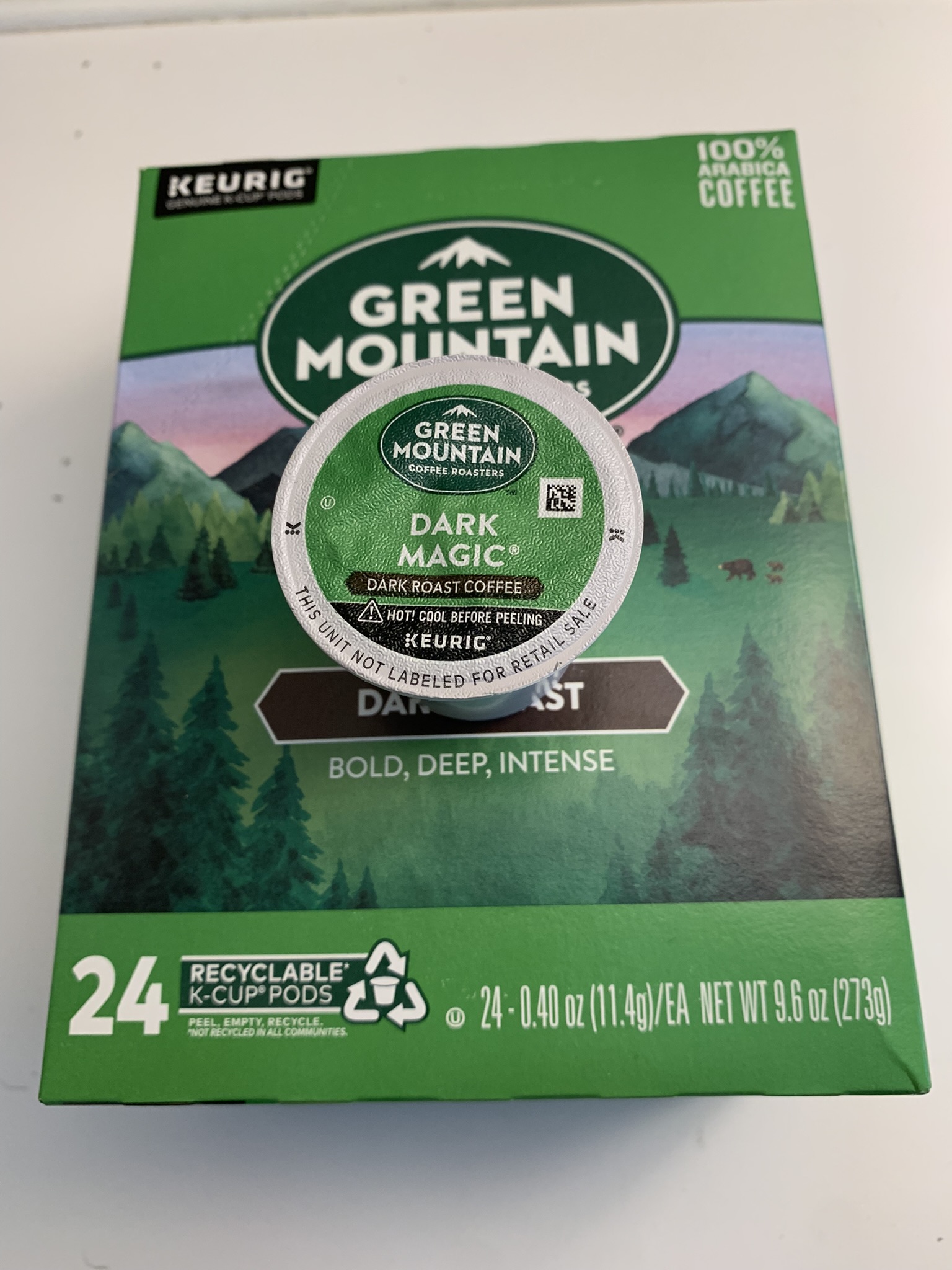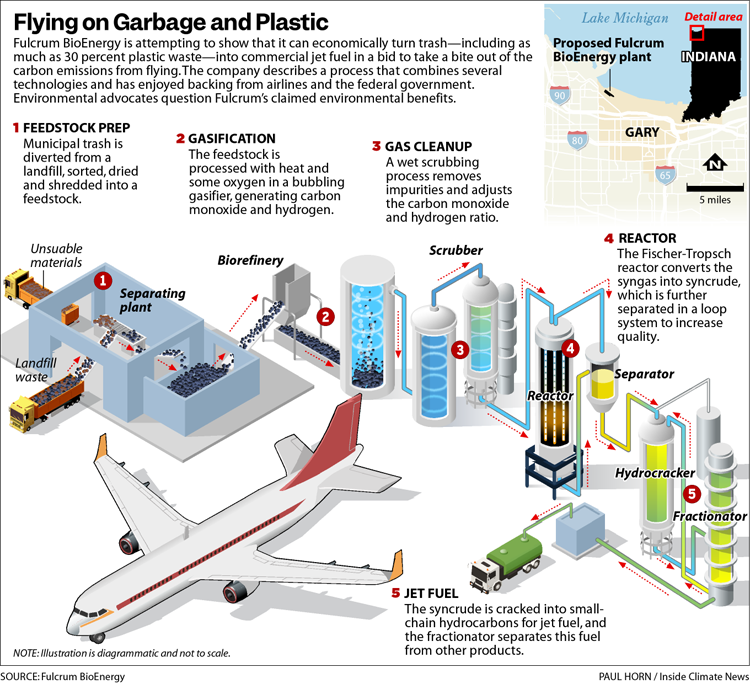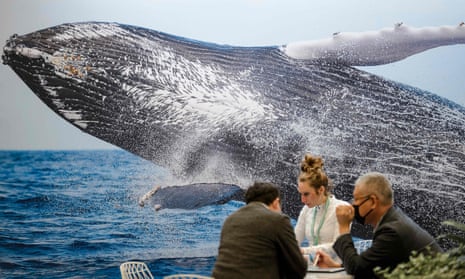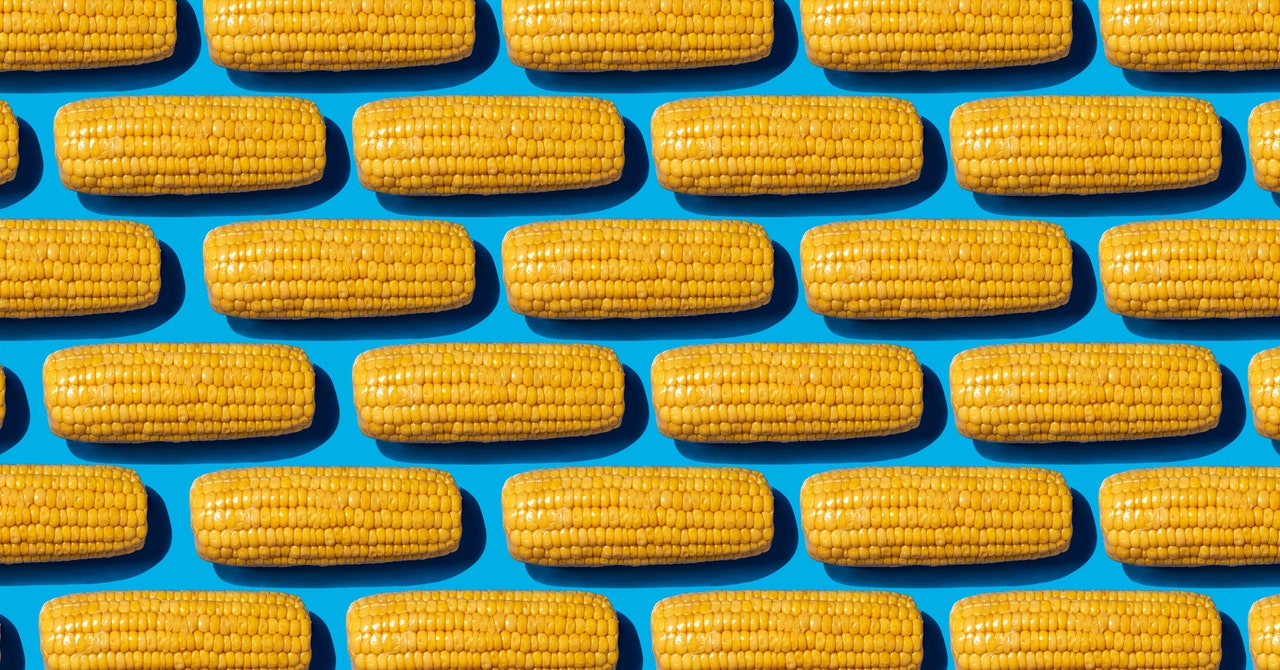Electronic cigarettes heavily marketed via single-use flavored products are increasingly popular. These products require disposal of large amounts of hazardous waste, including huge quantities of lithium, a resource in demand for electric car batteries and rechargeable electronics for laptops and mobile phones.Even as vaping use grows, an estimated 6 trillion “traditional” cigarettes are still smoked annually; 4.5 trillion are thought to be discarded into the environment each year. Researchers and activists emphasize that the tobacco industry is responsible for considerable harm to nature and human health.Traveling along the supply chain, tobacco production and consumption has consequences for forests, oceans, the climate, and for farmers and their families who produce the crop — all to an extent not yet fully known or understood.Efforts are underway to rein in some of these negative impacts against the backdrop of an industry accused of consistently greenwashing to conceal an environmental footprint that is harming both nature and public health. Vaping for a day and tossing it away is all the rage. Electronic cigarette sales have boomed in recent years, with single-use, throwaway devices growing in popularity, particularly among youth in some countries such as the United States and United Kingdom. This new, trendy face of the tobacco industry — touted for creating a smoke-free, but not tobacco-free, world — carries a heavy, and yet unquantified, environmental burden.
A recently published probe by the Bureau of Investigative Journalism found that 150 million disposable vapes are tossed out every year in the U.S. alone. Amounting to five every second, this consumption produces vast amounts of e-waste, sending up to 30 metric tons of lithium to U.S. landfills annually — enough to provide batteries for around 6,000 electric vehicles. Lithium is a vital ingredient in rechargeable electronics, including laptops and cellphones.
Earlier this year, another investigation found that the equivalent of 10 metric tons of lithium is thrown into the trash in the U.K. every year, even as demand for this precious material continues sky rocketing. The International Energy Agency and other bodies have warned that lithium shortages could lie ahead as supplies become stretched.
Vaping is increasingly popular and touted as a means to quit smoking. Long-term health consequences are still poorly understood, say experts. The environmental consequences of thousands of single-use, battery-driven, and plastic-laden devices may make vaping even more environmentally hazardous than standard cigarettes. Image courtesy Lindsay Fox via Flickr (CC BY 2.0).
“Little is documented about the harmful effects on the environment brought about by the production of these devices, but the disposal of e-cigarette cartridges and batteries represents a major environmental concern,” reads a report published earlier this year by the World Health Organization. “The majority of plastic e-cigarette liquid cartridges are not reusable or recyclable and end up in gutters, streets and waterways.”
These consumer devices come with an environmental impact that has yet to be fully accounted for, say experts. But it is well established that they use precious resources required for humanity’s transition to green economies. They also are laden with plastics, toxins and metals that represent a burgeoning and potentially explosive waste problem, for which e-cigarette manufacturers have provided little consumer guidance.
As such, e-cigarettes have been classified as a “rising environmental threat,” but they are only part of the global harm linked to the tobacco industry.
Cigarette butts are one of the most commonly found trash items in ocean cleanups. In 2020, the Ocean Conservancy’s International Coastal Cleanup program collected nearly 1 million butts, dwarfing the number of plastic bottles, the second-highest trash item. Waste related to electronic cigarettes is a growing concern. Image courtesy of Brian Yurasits/Ocean Image Bank.
Tobacco and its Earth impacts
Long before that moment when a spent e-cigarette is tossed away and discarded in the gutter or in a trash can, tobacco leaves a long trail of environmental damage.
All along its supply chain, from cultivation to post-consumer waste, “tobacco harms our environment, and destroys our forests, uses our safe drinking water, and pollutes our air,” Ruediger Krech, director of public health at the WHO, told Mongabay in an interview. These multiple impacts continue growing, which, “of course, is adding unnecessary pressure to our planet’s already scarce resources and fragile ecosystems.”
According to researchers and activists, tobacco is implicated in adding pressure to violating at least five critical planetary boundaries: impacting Earth’s biosphere integrity, climate change, the release of “novel entities” (including toxic pollutants), freshwater use, and land-system change.
Research by Nick Voulvoulis, deputy director of the Centre for Environmental Policy at Imperial College London, assessed the tobacco supply chain and found that in terms of climate, the industry as a whole emits an estimated 84 million metric tons of CO2 equivalent each year; that’s comparable to a country such as Peru’s carbon emissions.
Water use, too, is enormous: 22 billion liters (5.8 billion gallons) are used along the tobacco supply chain annually, roughly equivalent to the municipal water use of the U.K.
In addition, up to 5% of global deforestation is associated with tobacco farming, either to clear land for new farmland, or for the wood needed to carry out the curing process. A report by the WHO and the U.N. Environment Programme (UNEP) estimates that 200,000 hectares (nearly 500,000 acres) are cleared each year for tobacco, driving habitat and biodiversity loss.
Tobacco fields in the Chittagong Hill Tracts of Bangladesh. Tobacco growing accounts for an estimated 30% of the country’s deforestation, according to estimates. Image courtesy of PROGGA.
The brunt of this environmental harm is felt in developing countries — including China, India, Brazil, Indonesia and Zimbabwe — where the majority of tobacco cultivation and cigarette production now occurs: “Tobacco competes with essential commodities for resources and places significant pressures on the health of our planet and its most vulnerable inhabitants,” Voulvoulis’s study states. His research estimated that converting the land currently used for tobacco to food crops could feed 20 million people.
While this research sheds light on a vast range of environmental harm, it is by no means comprehensive. Voulvoulis said his life-cycle analysis likely “underestimated some of the impacts.” Plastic pollution from cigarette butt disposal, for example, was not included, nor were harms related to electronic cigarettes.
Tobacco control experts and researchers say the industry frequently downplays the environmental damage linked to its products along the supply chain, claiming that greenwashing is common and that industry efforts are insufficient in the face of tobacco’s environmental toll.
“We need to unravel these tactics that the tobacco industry is using. Very often they try to greenwash their reputation as a sustainable and eco-friendly industry,” said Krech. “Nothing could be further from the truth.”
The industrywide response to such charges can be summed up by what a Japan Tobacco International spokesperson wrote in an email to Mongabay, detailing action to reduce carbon emissions and address other environmental concerns. “As a company, we have a responsibility to operate sustainably, minimize our environmental impact, and contribute positively to the communities we operate in … We aim to reduce the impact of our own operations and our supply chain on the environment, by implementing best practices and encouraging innovation.”
A tobacco warehouse in Malawi. The country grows more than 90,000 metric tons of tobacco per year and is one of Africa’s largest exporters. Production is linked to a range of health risks for farmers along with environmental impacts, such as deforestation. It is estimated that around 30,000 hectares (74,000 acres) of forest are lost due to tobacco per year in Malawi. Image courtesy of Marcel Crozet/International Labour Organization via Flickr (CC BY-NC-ND 2.0).
Butts: The most ubiquitous polluter
The world has long been hooked on tobacco, but there are some signs this addiction is waning, if only slightly. Globally, prevalence of tobacco use is falling and now is below 20% of the population, according to the Tobacco Atlas; It estimates there are around 1 billion smokers and 200 million who use “other tobacco products.
“We are definitely seeing overall declines in adult prevalence, which is splendid, and I would say significant declines,” said Jeffrey Drope, co-author of the report and a tobacco control expert at the University of Illinois. “That said, we still have a billion smokers. So, it’s not like our work is done. That’s a lot of smokers.”
Those billion or so smokers puff on an estimated 6 trillion cigarettes per year, mostly using cigarette filters composed of plasticized cellulose acetate. As many as 4.5 trillion cigarettes butts are discarded into the environment, amounting to nearly 800,000 metric tons of waste ending up in streets, on beaches, and in oceans. Contrary to common belief, these filters do not fully biodegrade; instead they break up slowly over time into smaller fibers and microplastics. Thus, experts say, they contribute to an already massive global plastic pollution problem that has sparked urgent U.N. treaty negotiations.
Cigarette butt harm doesn’t stop at the plastic, says Thomas Novotny, co-director of San Diego University’s Center for Tobacco and the Environment. They are packed with thousands of chemicals, toxins, and even heavy metals which continue leaching once disposed of.
Dannielle Green, a marine ecologist at Anglia Ruskin University in the U.K., reviewed the evidence of cigarette butt pollution in terrestrial and aquatic environments, and she underlines the potentially lethal and sublethal impacts these can have on species: “There’s evidence for reproductive rate effects, … changes in growth, malformations and developmental impacts.”
Research has shown nicotine and other chemicals in cigarette butts are toxic to “microbes, plants, benthic organisms, bivalves, zooplankton, fish, and mammals,” but warn that “critical” knowledge gaps remain. Wider ecosystem-level impacts, says Green, are among those. The concern around e-cigarette disposal and their chemical impacts is thus occurring in the context of an already massive load of environmental harm.
Used cigarette filters can contain thousands of chemicals and contribute to global plastic pollution, say experts. They are also widely perceived to hold health benefits for smokers, reducing exposure to toxins and health issues such as cancer: this too is false, say health experts, and is not based on scientific evidence, in what is dubbed “filter fraud.” Image courtesy of Craig Dennis via Flickr (CC BY 2.0).
Producing a green sickness
Smoking sickens and kills people — lots of them. More than 8 million people die due to smoking every year, according to estimates, with massive economic costs attached.
But these health impacts run deeper, and go beyond those who consume the product, say experts. Researchers and activists in tobacco-growing countries describe a situation whereby many tobacco farmers become ensnared in a cycle of farming that is not only potentially damaging to their and their families’ health and the environment, but is also rarely financially viable.
In Brazil, Marcelo Moreno, a public health expert with the Oswaldo Cruz Foundation, studies the health impacts of tobacco farming. He explains that tobacco farmers face multiple health issues due to exposure to pesticides and other chemicals at higher rates than other crops, while long, arduous work results in musculoskeletal issues and chronic pain. In addition, a condition known as green tobacco sickness — a form of acute nicotine poisoning — is often prevalent, understudied, and underreported among tobacco farmers in many producer countries — a disease often exacerbated by a lack of suitable protective equipment.
Due to the intensive demands of farming and production of tobacco falling on family farms, child labor is said to be rampant in the tobacco industry, exposing children to these varied health risks.
According to a U.S. Department of Labor report, “Findings on the Worst Forms of Child Labor,” children on tobacco farms in producer countries such as Indonesia are “exposed to pesticides, work long hours, carry heavy weight, and work in extreme heat, among other activities.” In the U.S., which continues to be a major producer of tobacco, child labor and labor violations are also reported.
Brazil is one of the world’s largest tobacco producers. Data related to environmental harm are limited, says Marcelo Moreno of the Oswaldo Cruz Foundation, but tracking health issues impacting farmers there gives an indication of widespread and heavy use of agrochemicals. Research by Moreno and others suggests the prevalence of pesticide poisoning and green tobacco sickness grew between 2010 and 2019, but remained underreported. Image courtesy of Marcelo Moreno.
A study published in 2021 from southern Brazil, where most of the country’s tobacco is produced, found “a high prevalence of [green tobacco sickness], pesticide poisoning, respiratory, and musculoskeletal problems” among child workers.
This dangerous form of farming doesn’t result in financial gains in many cases, says Drope: “In some countries, [farmers] are literally going into debt each season, but because they’re in these contractual relationships [with tobacco companies], they’re obligated in the next growing season to continue to grow tobacco,” he said. “So, they’re trapped. They’re trapped in a brutal debt cycle in some countries.”
In a study released last year, researchers in Bangladesh concluded that family labor, land and environmental costs drive down any profitability for farmers, stating that “tobacco cultivation is not as beneficial as popularly perceived.”
According to the Bangladesh-based tobacco control group PROGGA, the list of environmental concerns linked to farming include deforestation, overuse of pesticides, land degradation, and water pollution. Around 30% of the country’s deforestation is estimated to be driven by tobacco, and it contributed to the ecological decline of the country’s Halda River, a vital breeding habitat for Indian carp.
Tobacco farmers in Bangladesh. Research suggests that when accounting for a range of factors, including the impact on the environment, tobacco farming is not as profitable as is claimed. Experts say this is the case in other producing countries. Image courtesy of Magalie L’Abbé via Flickr (CC BY-NC 2.0).
This pattern plays out in other producing countries. Experts describe tobacco as a “fickle” crop requiring vast amounts of agrochemicals which over time can deplete soils, and it’s one that demands the use of vast amounts of wood to be burned in the tobacco curing process. To meet and combat wood demand, reforestation efforts have taken place in some locations. In Zimbabwe, for example, a report published earlier this year states such efforts “are not widely implemented” and are “largely inadequate.” Critics argue that tobacco company efforts at corporate social responsibility often amount to little more than industry promotional activities conducted in many producer countries.
Little data exist on the environmental impact of tobacco farming in Brazil, one of the world’s largest tobacco producers, but Moreno says the health impacts are indicative: “We know that tobacco farming is damaging to the environment, but we cannot precisely say how it occurs,” he said. “We can say if these people are contaminated then [the farms] use massive quantities [of agrochemicals] that can obviously contaminate water and soils.”
Kevin Genga, an environmental activist and anti-tobacco campaigner in Kenya, paints a similar picture, underlining that chemicals used by the industry degrade soils. “You find that when they use too many chemicals the soil structure gets to be overutilized,” he said. “After maybe two, three or four seasons of doing that activity, these soils cannot be self-dependent to yield crops that are consumed by the community.”
A past industry-funded report carried out in Bangladesh, Brazil and Kenya sought to identify if tobacco farming prevents “farmers and rural communities from prospering.” “Overall, we found no evidence of this. In fact, among our samples, tobacco growing appears to play an important role in the livelihoods of tobacco farmers and labourers” in the three countries, the report states. “Some issues” were found, including “small-scale land and forest clearance, incidents of child labour and green tobacco sickness.”
Tobacco farmer in Brazil. Experts state that due to a confluence of health hazards, demands on family work, environmental harm, and more, tobacco farming is often barely profitable for farming families in developing countries. Image courtesy of Rachel Gurgel.
Kicking the (cigarette) butt habit
At the opposite end of the supply chain, Novotny and others are categorical in their assertion that to solve the cigarette butt pollution problem, cellulose acetate filters must be banned as a single-use plastic. Tobacco control groups are aiming to have these filters written into the global plastics treaty currently under discussion. Such a move is “perhaps the fastest and easiest” way to address issues of “global public and environmental health,” tobacco control groups said in a recent statement.
That position is not supported by some in the industry: “Banning the use of cellulose acetate filters, before viable alternatives come to market, will do little to help the environment, but will instead risk driving consumers to purchase illegal cigarettes,” wrote the spokesperson from Japan Tobacco International.
Non-cellulose acetate biodegradable filters have been proposed to beat the plastic problem. But while these would reduce plastic pollution, they won’t necessarily solve chemical pollution, says Green, due to leaching of accumulated toxins. In fact, though research on this new type of filter is limited, a study published in 2021 suggests they may contain higher concentrations of metals and metalloids, potentially worsening their impacts.
That’s an issue, acknowledges Tadas Lisauskas, co-founder and CEO of Greenbutts, a biodegradable filter company. But he defends his company’s focus on solving the plastic problem: “If you’re producing fewer metric tons of plastic, that’s automatically going to be a plus for the environment,” he said.
Greenbutts, a corporation, proposes making biodegradable filters as a solution to cigarette plastic pollution. Tadas Lisauskas, co-founder and CEO, acknowledges, however, that the new filters do not solve resulting chemical pollution. His company, he states, is undertaking “joint development projects” with the tobacco industry’s “top three”; conversations spurred on by the ongoing negotiation of a global single-use plastic treaty and measures implemented to curb tobacco-related pollution in the European Union. Image courtesy of Greenbutts.
The only way to eliminate the persisting chemical pollution, he said, would be to “do away with cigarette smoking,” something his company does not advocate: “We don’t want to change people’s behaviors,” Lisauskas explained. “People have been smoking for millennia, that’s not going to change.”
Novotny, who is also the founder of the Cigarette Butt Pollution Project, labels biodegradable filters as a “distraction” from the wider issue: “[T]hese butts are still contaminating the environment with the chemicals that exude from them,” he said. “This solution benefits the tobacco industry and not smokers or the environment. It will encourage people to smoke and to discard toxic butts.”
“We want there to be a global effort to eliminate tobacco use and [eliminate] the enormous health burden that filtered, unfiltered, or biodegradable filtered cigarettes continue to [have] impact[ing] humankind,” he added.
Some critics also call for a ban on disposable electronic cigarettes, for youth-attracting flavors to be outlawed, or for the products to be far more strictly regulated. “First of all, there needs to be much more in the public awareness of how environmentally disrupting these novel products like e-cigarettes are,” WHO’s Krech said. “We think that they need to be strictly regulated as well because they endanger wildlife with the plastics, nicotine, heavy, metals, the lead, the mercury, and the lithium.”
Nicotine expelled from consumers’ bodies can pass into waterways via wastewater; an estimated 80% of the world’s waste flows into the environment untreated. A review published this year states that “despite being in low concentrations and having low bioaccumulation potential, monitoring [nicotine and alcohol] occurrence remains important given their potential toxic effects.” Most nicotine studies are conducted in developed countries and further research is needed “especially in developing countries where most wastewater flows untreated into the environment and where such studies are lacking.” Image courtesy of Aviavlad via Pixabay (Public domain).
Kicking the tobacco-growing habit
To effectively tackle the environmental and social harm done by tobacco growing, advocates say farmers should be supported to find alternative cash crops. That in turn would address food security issues.
Next year’s World No Tobacco Day, to be held May 31, 2023, is centered around possible alternatives to tobacco land use. Redirecting and regenerating land to produce food instead of tobacco is key to providing sustainable solutions for farmers and the environment in many parts of the developing world, said the WHO’s Krech.
Last year, a partnership between the WHO, the World Food Program and the Food and Agriculture Organization launched a “Tobacco-free farms” project to work with farmers to swap their tobacco crops for iron-rich beans. That project has already supported more than 1,000 farmers in quitting tobacco growing across Kenya. By March 2022, more than 135 metric tons of beans were produced, a figure that has now risen to around 400 metric tons, said Joyce Nato, the WHO’s lead on the project.
“We help our tobacco farmers to move away from tobacco farming to alternative livelihoods, and we are ready to support them [all the way] to the market, which has always been an issue,” Nato said in an interview. And these innovative farmers aren’t only harvesting beans. They “can later on choose other alternative value chains they want to grow.”
Plans are afoot to introduce this particular project to other counties, and to launch a similar initiative in Zambia, another major tobacco producer where there’s appetite for change: “So, we feel that this is a big success!” Nato said.
“We must stop tobacco growing, because it is not beneficial to the farmers, it’s only beneficial to the industry,” Nato concluded, adding that what is good for the social and economic well-being of farmers will also benefit the environment — helping protect soils, water, and the climate: “Tobacco is a contributor to that [harm]. Tobacco growing is a contributor to environmental hazards.”
There are more than 1 billion smokers worldwide and a further 200 million or so who consume tobacco by other means, such as electronic cigarettes. Tobacco use is well known as a health hazard. The environmental impacts along the product’s supply chain are less well known but considerable; with effects on forests, biodiversity, water, climate change, and more. Image courtesy of nextpageplease via Flickr (CC BY-NC 2.0).
Banner image: Every year, volunteer beach cleaners pick up millions of cigarette butts; it’s estimated 4.5 trillion cigarette butts are released into the environment each year. Contrary to common belief, standard cigarette filters are not fully biodegradable. Researchers and activists point out that “downstream approaches” such as cleanups are not sufficient to stem the tide of tobacco-related pollution and they’re calling for a ban on filters. Image courtesy of Marevivo Onlus/Ocean Conservancy.
Citations:
Beutel, M. W., Harmon, T. C., Novotny, T. E., Mock, J., Gilmore, M. E., Hart, S. C., … Holden, P. A. (2021). A review of environmental pollution from the use and disposal of cigarettes and electronic cigarettes: Contaminants, sources, and impacts. Sustainability, 13(23), 12994. doi:10.3390/su132312994
Booth, D. J., Gribben, P., & Parkinson, K. (2015). Impact of cigarette butt leachate on tidepool snails. Marine Pollution Bulletin, 95(1), 362-364. doi:10.1016/j.marpolbul.2015.04.004
Dobaradaran, S., Soleimani, F., Akhbarizadeh, R., Schmidt, T. C., Marzban, M., & BasirianJahromi, R. (2021). Environmental fate of cigarette butts and their toxicity in aquatic organisms: A comprehensive systematic review. Environmental Research, 195, 110881. doi:10.1016/j.envres.2021.110881
Fassa, A. G., Faria, N. M., Szortyka, A. L., Meucci, R. D., Fiori, N. S., & Carvalho, M. P. (2021). Child labor in family tobacco farms in southern Brazil: Occupational exposure and related health problems. International Journal of Environmental Research and Public Health, 18(22), 12255. doi:10.3390/ijerph182212255
Green, D. S., Tongue, A. D., & Boots, B. (2022). The ecological impacts of discarded cigarette butts. Trends in Ecology & Evolution, 37(2), 183-192. doi:10.1016/j.tree.2021.10.001
Koroleva, E., Mqulwa, A. Z., Norris-Jones, S., Reed, S., Tambe, Z., Visagie, A., & Jacobs, K. (2021). Impact of cigarette butts on bacterial community structure in soil. Environmental Science and Pollution Research, 28(25), 33030-33040. doi:10.1007/s11356-021-13152-w
Lencucha, R., Drope, J., Magati, P., & Sahadewo, G. A. (2022). Tobacco farming: Overcoming an understated impediment to comprehensive tobacco control. Tobacco Control, 31(2), 308-312. doi:10.1136/tobaccocontrol-2021-056564
Marynak, K. L., Gammon, D. G., Rogers, T., Coats, E. M., Singh, T., & King, B. A. (2017). Sales of nicotine-containing electronic cigarette products: United States, 2015. American Journal of Public Health, 107(5), 702-705. doi:10.2105/ajph.2017.303660
Meucci, R. D., Fassa, A. G., Faria, N. M., & Fiori, N. S. (2015). Chronic low back pain among tobacco farmers in southern Brazil. International Journal of Occupational and Environmental Health, 21(1), 66-73. doi:10.1179/2049396714y.0000000094
Ngwira, S., & Watanabe, T. (2019). An analysis of the causes of deforestation in Malawi: A case of Mwazisi. Land, 8(3), 48. doi:10.3390/land8030048
Pourchez, J., Mercier, C., & Forest, V. (2022). From smoking to vaping: A new environmental threat? The Lancet Respiratory Medicine, 10(7), e63-e64. doi:10.1016/s2213-2600(22)00187-4
Raja, K. (2021). Green tobacco sickness: An understudied disease among tobacco harvesters. Tobacco Induced Diseases, 19(1). doi:10.18332/tid/140982
Shen, M., Li, Y., Song, B., Zhou, C., Gong, J., & Zeng, G. (2021). Smoked cigarette butts: Unignorable source for environmental microplastic fibers. Science of The Total Environment, 791, 148384. doi:10.1016/j.scitotenv.2021.148384
Suárez-Rodríguez, M., Montero-Montoya, R. D., & Macías Garcia, C. (2017). Anthropogenic nest materials may increase breeding costs for urban birds. Frontiers in Ecology and Evolution, 5. doi:10.3389/fevo.2017.00004
Zafeiridou, M., Hopkinson, N. S., & Voulvoulis, N. (2018). Cigarette smoking: An assessment of tobacco’s global environmental footprint across its entire supply chain. Environmental Science & Technology, 52(15), 8087-8094. doi:10.1021/acs.est.8b01533
FEEDBACK: Use this form to send a message to the author of this post. If you want to post a public comment, you can do that at the bottom of the page.
agribusiness, Agriculture, Business, Chemicals, Climate Change, Climate Change And Conservation, Conservation, Deforestation, Diseases, Ecological Footprint, Environment, Environmental Law, Farming, Forests, Health, Industrial Agriculture, Industry, Nutrient Pollution, Plantations, Pollution, Public Health, Technology, Tropical Forests, Waste, Water Crisis, Water Pollution
Print

